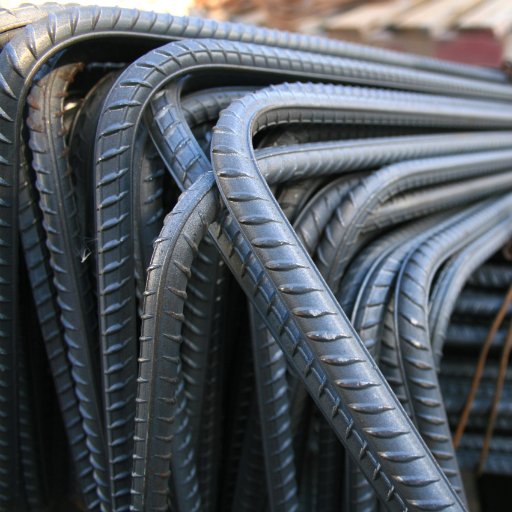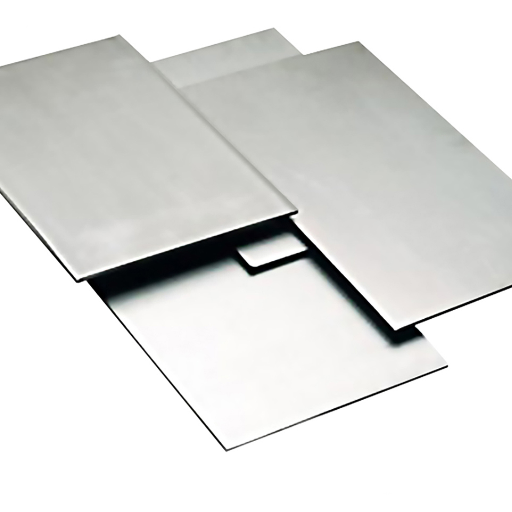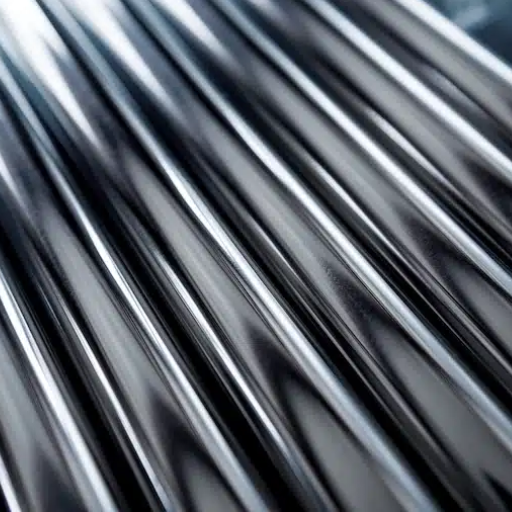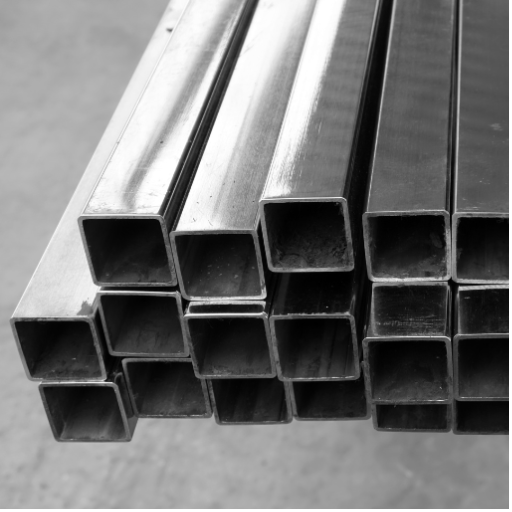Due to its features and flexibility, 304 stainless steel round bar is a greatly used material in many industries. This article outlines the 304 stainless steel round bar in detail. Its composition, mechanical properties, production processes of round bars, and common uses of the product. We will also examine its advantages like durability and corrosion resistance and essential factors of the grade selection for certain applications. If you are a manufacturer, an engineer, or simply someone who seeks knowledge in material science, this guide will help you to make informed decisions about 304 stainless steel round bars.
What Makes 304 Stainless Steel Round Bar Unique?

The exceptional strength, durability, and corrosion resistance of the 304 stainless steel round bar are fascinating. Knowing the components of stainless steel helps us understand its features. It is made of iron – chromium (18-20%) – nickel (8-10.5%). Among the stainless steels, this steel grade has good oxidation and corrosion resistance in moist environments, chemical exposure, and acidic conditions. Moreover, it is non-magnetic in the annealed condition, which makes use of this steel grade wide-ranging. 304 stainless steel is also very amenable to forming and welding and can be easily fabricated. All these attributes make the 304 stainless steel round bar highly sought after in several industries like construction, automotive, aerospace, and food processing industries.
Understanding the Corrosion Resistance of 304 Stainless Steel
304 Stainless Steel’s high chromium and nickel content leads to exceptional corrosion resistance as it forms a passive oxide layer on its surface. It protects against moisture exposure and oxidation. This alloy is versatile in its applications as it can resist rust in environments that range from moderately acidic to mildly alkaline. Freshwater, steam, and moderately noxious chemical conditions are some of its most notable performance parameters. Even though its performance parameters are exceptionally high, it is still quite susceptible to pitting and crevice corrosion when placed in an environment with high concentrations of salts, such as marine settings or regions with de-icing salts. To maximize its lifespan as well as preserve its protective features, one must perform proper cleaning and maintenance. These conditions make the use of 304 stainless steel widely spread across myriad industries including food processing, marine, chemical, and equipment industries which are known for having strict conditions.
How Does the Nickel Content Affect 304 Stainless Steel?
Nickel is a vital component of 304 stainless steel because of the numerous benefits it offers the alloy. Nickel constitutes 8-10.5% of the alloy. It is critical in boosting the alloy’s ability to resist corrosion, particularly in mildly acidic and neutral conditions. In addition to providing significant improvement in the corrosion-resistant ability of the alloy, it also improves the oxidation and pitting corrosion resistance of the alloy. Nickel helps the alloy perform reliably in various industrial sectors including food processing and chemical industries. It also helps stabilize the alloy’s austenitic structure at moderate and low temperatures which results in the material demonstrating exceptional mechanical toughness and ductility. However, some aspects of nickel content may affect the cost of the material, thermal expansion properties, and overall, 304 severe application-specific nickel content.
Comparing 304 Stainless Steel Round with Other Alloys
There are specific features that stand out when comparing the characteristics of 304 stainless steel rounds with other types of alloys. First, for instance, it has a relatively higher resistance to corrosion compared to carbon steel and many other stainless steel, especially in moist, acidic, and neutral environments. In contrast to carbon steel which rusts easily, 304 stainless steel does not rust easily, provides high mechanical durability, and allows sustenance of aesthetics throughout numerous years.
Nonetheless, compared to 316 stainless steel, 304 has poorer resistance to chlorides and highly hostile chemical environments because 304 contains appreciably less molybdenum. Nevertheless, this lower resistance is advantageous in terms of cost-effectiveness for applications that do not require high resistance against chlorides, thus, it is more favorable for a wider range of purposes.
When compared to aluminum alloys, 304 stainless steel is heavier, but it has greater tensile strength and greater ability to withstand temperatures. In contrast, aluminum is selected for some applications where weight savings are very important but can be less resistant to certain environmental conditions, especially without appropriate anodizing or coatings.
In terms of price, performance, and flexibility 304 stainless steel round is relatively non expensive. Therefore, it is used in various industries such as construction, automotive industry, and food processing where there is a need for high mechanical strength along with corrosion resistance.
How to Choose the Right Stainless Steel Round Bar?

Choosing the correct type of stainless steel round bar entails many factors to guarantee satisfactory performance for the intended use. First, consider the surrounding environment such as exposure to corrosion, high temperatures, and even humidity, as these factors will affect the need for higher grades like 316 in place of 304. Next evaluate the mechanical aspects such as impact, tensile strength, hardness, and durability for the requirements of the application. In addition, remember the weight and cost restrictions because 304 stainless steel is cheap and efficient for many general purposes but stainless steel is more costly compared to aluminum which is used in weight-sensitive designs. Last, review various industry standards and certifications to check whether the necessary specifications will be met before selection is done.
Factors to Consider: Diameter and Length
The requirements of varying applications must be met when measuring the diameter and length of a round stainless steel steel bar. The diameter indicates how much weight the bar can support and its strength, thus for structural or mechanical uses, it needs to be at a required level of performance. The cost, weight, and the thicker the diameter, the higher the stress it can withstand. Length, on the other hand, should adroitness the overall design while reducing excess material. More often than not, standard sizes suffice, but precision projects do require custom sizes which, thankfully, are available. Like diameter, length requires tolerances, and for high-precision applications such as machining or manufacturing processes, tighter tolerances and more accuracy are necessary. Ensure that all measurements comply with applicable industry standards, such as ASTM or ISO, for uniformity and quality.
Choosing the Best Round Bar Stock for Your Project
To choose the most appropriate round bar stock for your application, some significant factors need to be looked into which would make the application of selection criteria much easier. Start with the type of material which can be either stainless steel, carbon steel, or even aluminum and alloy steel. Select Stainless steel for its unrivaled corrosion-resisting properties, and carbon steel for its enhanced strength, and affordability. Following, the bar’s mechanical relevant factors like tensile strength, yield strength, and hardness need to be checked to make sure they cater to all functional requirements. In addition to that, precision concerning the tolerances concerning the bar’s diameter and length is essential, especially for machining or load-bearing applications.
You should also check the operational effectiveness of the bar surface finish. Deciding on smoother finishes will help lower friction and wear during use. With full regard to quality assurance and performance, any certification covering industry standards such as ASTM A276 or ISO 9001 is a must. Don’t forget to consider the cost by analyzing a trade-off between material expense incurred and saving from maintenance expenditure and check which is more favorable over time. You will be able to pick the right round bar stock designed for your application needs as long as you look into these aspects paired with trustworthy suppliers.
Who Are the Leading 304 Stainless Steel Round Bar Suppliers?

Several suppliers are noted for providing quality 304 stainless steel round bars, as per the requirements of the industry and their clients. Companies like Reliance Steel & Aluminum Co, Ryerson, and Outokumpu are known for a range of products and their international marketing. Also, suppliers such as Metal Supermarkets and Materials NA focus on but are not limited to, accuracy and customization of precision parts as well as fast delivery. Always check that the suppliers have the relevant ASTM and ISO certifications to ensure the materials meet the required quality and performance standards.
Finding a Reliable Round Bar Supplier
When searching for a legitimate round bar supplier, scrutinize their certifications, product catalog, and customer service history. Suppliers who have obtained certifications like ASTM, ISO, or equivalents demonstrate adherence to theoretical industry expectations. Well-known suppliers such as Reliance Steel & Aluminum Co., Ryerson, and Metal Supermarkets focus on quality and precision and provide variations in stainless steel round bars like the extremely common grade 304, along with offering custom services. Also, focus on reviews concerning material quality, punctual deliveries, and ease of meeting non-standard requirements as these attributes are critical for dependable industrial and application-specific requirements.
Top Metal Supply Companies to Consider
Here are three industry-leading companies to consider when sourcing high-quality metals for industrial and application-specific requirements:
- Reliance Steel & Aluminum Co.
Reliance Steel & Aluminum Co. is among the largest metal distributors in the United States, offering an extensive range of metals such as aluminum, stainless steel, and carbon steel. The company provides high-quality grades and customization tailored to specific industrial needs. Known for its vast distribution network and just-in-time delivery service, Reliance ensures optimal supply chain management for its clients.
- Ryerson
Ryerson is a global leader in metal supply, known for its precise processing capabilities and broad inventory of products, including round bars, sheet metal, and tubing. Renowned for its customer-centric approach, Ryerson delivers materials that meet ASTM, ISO, and other critical standards. Their operation includes advanced processing services such as cutting, forming, and machining, making them an ideal partner for specialized projects.
- Metal Supermarkets
Metal Supermarkets is a trusted supplier for businesses of all sizes, offering over 8,000 metal types, shapes, and grades. Specializing in small-quantity orders, this supplier excels in flexibility and efficiency, catering to both small-scale and large-scale production needs. Customers value their rapid delivery times and robust customer service, which ensures a seamless procurement experience.
Each of these suppliers has a strong reputation, industry certifications, and a track record of prioritizing quality and customer satisfaction. Depending on the specific requirements of your project, these companies serve as excellent starting points for securing reliable metal products.
What Are the Applications of 304 Stainless Steel Round Bar?

The 304-grade stainless steel round bar is popular in many industries for its corrosion resistance, strength, and versatility. It is often used for structural elements in construction such as braces and supports, shafts, and fittings where there is constant exposure to water and seawater in marine applications. It is also extensively used in the food and beverage industry for mixers, tanks, and conveyors because they are sanitary. Moreover, it can also be found in automotive components, medical tools, and industrial machinery which are all high-stress and precision applications.
Using 304 Stainless Steel Round in Architectural Projects
The 304 stainless steel round bar exemplifies architecture because of its resistance to corrosion, aesthetic appeal, durability, and other appealing properties, making it indispensable in architectural frameworks. Architects and Builders utilize it for many structural parts such as handrails, balustrades, and frames because it is suitable for indoor and outdoor conditions, including urban pollution and weathering. In addition, its ability to handle stress and preserve its structural integrity for long periods makes it excellent for other load-bearing features. Moreover, the polish of 304 stainless steel adds to design elements with modern sophistication and beauty. This material is willingly chosen for high visibility developments, including but not limited to, decorative features and building façades. Furthermore, the material’s elaborateness nourishes design customizations, complex geometry, and tensile pieces that are beautiful and functional in architectural creativity.
Industrial Uses of Stainless Steel Round Bar
Stainless steel’s round bars are essential in use for numerous industrial operations thanks to their mechanical properties and flexibility. They are used in the construction of various fasteners including screws, bolts, and rods, which are needed to be tightened under tremendous stress. Also, these bars are used as shafts and pins for engines, turbines, and other rotating machinery where accuracy and strength together matter most. Moreover, stainless steel round bars are used as structural elements in cars and planes because they can endure excessive pressures and extremely low temperatures. Apart from heavy industrial muscles, they are used in the production of medical devices which include surgical tools and implants owing to their biocompatibility and nonreactive nature. Due to these reasons, bars made of stainless steel are extremely relevant throughout various industrial spheres.
Crafting with 304 Stainless Steel Round Bar
The reason why the 304 stainless steel round bar is popular in welding and machining is its excellent formability. The versatility, corrosion resistance, and durability of its components make it ideal for a variety of crafting applications. Furthermore, the 304 stainless steel round bar demonstrates cost-efficiency compared to higher-grade alloys like 316 stainless steel. The steel is especially sought after because its composition includes approximately 18% chromium and 8% nickel, ensuring exceptional resilience against rust and oxidation. Due to its non-reactive nature and ease of cleaning, this alloy is perfectly suited for food processing and pharmaceutical equipment as well. Its reliability and performance rest assure that it isn’t solely reserved for general purpose application. The adaptability and strength of the steel guarantees effectiveness in both aesthetic crafting as well as functional engineering tasks.
How Does 304 Stainless Steel Round Bar Compare to 316?

The fundamental distinction between 304 and 316 stainless steel round bars is their chemical composition and performance characteristics. Both alloys have chromium and nickel, but 316 has an extra element, molybdenum, that is generally around 2-3%. The presence of molybdenum enhances 316’s pitting and crevice corrosion resistance greatly, particularly in areas that are rich in chlorides. Therefore, 316 stainless steel is more suitable for marine applications or industries with severe chemical exposure. Meanwhile, 304 is more cost-efficient and ideal for standard conditions. Although both grades are highly durable, the ultimate decision between them is defined by the environmental conditions and the requirements of the application.
Comparing Corrosion Resistance and Tensile Strength
While examining corrosion resistance and tensile strength, it is crucial to evaluate how these materials behave in particular environmental and mechanical settings. Corrosion resistance indicates a material’s capacity to endure destruction resulting from chemical or electrochemical interactions with its setting, such as moisture, acids, and salts. As an example, stainless steel succeeds in this property owing to its chromium content, which forms a protective oxide layer. Meanwhile, tensile strength defines the highest stress a material can withstand when being stretched or pulled before failure. Titanium alloys, for instance, show exceptional corrosion resistance and high tensile strength, making them ideal for aerospace and marine industries. Even though increased corrosion resistance tends to accompany increased tensile strength, which results from modifying the material composition, specific alloys such as duplex stainless steels can provide a balance that meets the demands of highly corrosive environments.
Differences in Weldability and Pricing
When comparing materials based on weldability, factors such as composition, thermal conductivity, and melting point play critical roles. For instance, materials like carbon steel are renowned for their high weldability due to their low carbon content, which minimizes the risk of cracking. On the other hand, stainless steel, while also weldable, sometimes requires specialized techniques to maintain its corrosion resistance and prevent thermal distortion. Aluminum, due to its high thermal conductivity and low melting point, requires more precise heat control during welding to avoid defects such as porosity or cracking.
Pricing, in contrast, is influenced by factors such as raw material availability, manufacturing processes, and market demand. Carbon steel is typically the most cost-effective option, making it widely used in industrial applications. Stainless steel prices are higher due to the presence of alloying elements such as chromium and nickel, which enhance its corrosion resistance. Aluminum’s cost varies depending on the grade and form, and though often less expensive than stainless steel, its lightweight and oxidation-resistant properties can justify its premium in specific applications. Choosing between these materials often involves balancing the priorities of weldability, material properties, and overall budget.
References
Frequently Asked Questions (FAQ)
Q: What is a 304 stainless steel round bar?
A: A 304 stainless steel round bar is a long, cylindrical metal product made from 304 stainless steel, known for its excellent corrosion resistance and durability. It is often used in various applications due to its high strength and versatility.
Q: What are the typical applications for 304 stainless steel round bars?
A: Applications for 304 stainless steel round bars include construction, automotive, aerospace, and marine industries. They are used for manufacturing shafts, fasteners, and various structural components due to their strength and corrosion-resistant properties.
Q: How does the chromium content in 304 stainless steel round bars benefit its properties?
A: The chromium content in 304 stainless steel round bars enhances their corrosion resistance by forming a protective oxide layer on the surface, preventing rust and making them suitable for use in harsh environments.
Q: What standards apply to 304 stainless steel round bars?
A: 304 stainless steel round bars are typically produced according to ASTM standards, such as ASTM A276, which specifies the requirements for stainless steel bars and shapes for construction and industrial use.
Q: Can 304 stainless steel round bars be welded?
A: Yes, 304 stainless steel round bars can be welded using standard welding techniques. They are known for their good weldability, making them suitable for a wide range of fabrication and assembly applications.
Q: What is the significance of the UNS S30400 designation for 304 stainless steel?
A: UNS S30400 is the Unified Numbering System (UNS) designation for 304 stainless steel, indicating its specific chemical composition and properties. It helps standardize and identify materials across different industries.
Q: How does the carbon content affect the properties of 304 stainless steel round bars?
A: The carbon content in 304 stainless steel round bars is relatively low, which helps maintain their corrosion resistance and prevents the formation of carbide precipitates that can reduce the material’s durability and strength.
Q: Are 304 stainless steel round bars a cost-effective option for industrial use?
A: Yes, 304 stainless steel round bars are considered cost-effective due to their excellent balance of strength, corrosion resistance, and versatility, making them suitable for a wide range of applications without compromising on quality.
Q: How can I purchase 304 stainless steel round bars?
A: You can purchase 304 stainless steel round bars from various sellers, including online metal suppliers. Many offer options to cut to size and add to a cart for easy purchasing. For specific requirements, please contact your preferred seller directly.
Q: What are the dimensions typically available for 304 stainless steel round bars?
A: 304 stainless steel round bars are available in a wide range of dimensions, including various diameters (dia) and lengths. Common diameters range from small rods around 6mm to larger bars up to 100mm or more, depending on the supplier.







